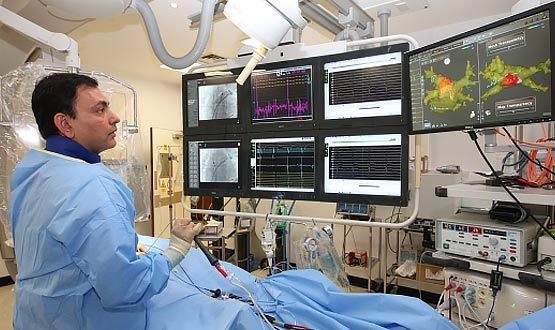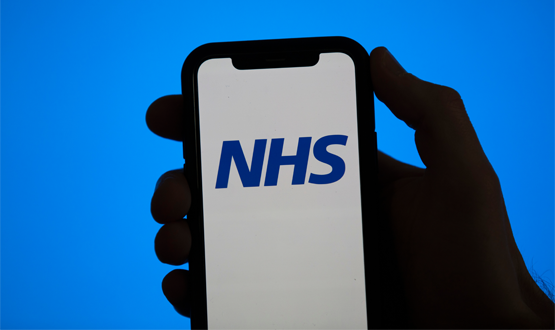From the Heart and Chest
- 12 August 2013

To misquote Winston Churchill, we at Liverpool Heart and Chest Hospital have not reached the beginning of the end, but this is the end of the beginning.
Our EPR went live approaching six weeks ago and we are transitioning from the go-live phase into ‘business as usual’. However, our business has forever changed.
Paper, while not by any means fully eliminated, has a secondary rather than a primary role in the way that we deliver care.
Reflections
At this point, we are all exhausted. Go-live has been intense, with lots of things to which to respond. However, it also comes after an intense few months in which we crammed as much as possible in to the product with which we went live. It has been nice to see the team able to go off on holiday, given how hard they have worked.
If you had asked me who I felt had engaged effectively in the EPR development before we went live – and who had engaged less effectively – there would be a strong inverse relationship between departments and how well the EPR is working now.
Engagement, obviously, is far from the only factor in that. But I do feel broadly vindicated in my assertion early on that we will get the EPR that we deserve, both as an organisation, and as a department.
Note that I qualified “engaged” with the word “effectively” – while there were some who didn’t engage with us at all, there were others who engaged a lot, but with a lack of focus over what the requirements were.
The really interesting thing, though, is that the whole go-live process and the challenges that it has given us have tended not to be IT related.
There is a generic issue of response to change – some embrace it, while others resist it, and others use change as an opportunity to “pull a fast one”.
My favourite example is the issue of dual signatures. Dual signatures have always been needed in lots of places, for things like the administration of intravenous drugs.
The concept is that you give the drug with someone else checking it next to you, and then you both sign to document what you have done.
It has been claimed in some quarters that the EPR is “unsafe” because when you nominate who is co-signing with you, you can pick any member of staff.
I am perplexed as to why you would even consider picking anyone other than the person standing next to you. The EPR doesn’t know who that person is, but you do (hopefully).
It would appear that we need to clarify that an EPR augments safety, but does not replace the vital four inches between the ears…
Anyway, we are now coming to the end of the intense fire fighting phase of reacting to issues: patches have been applied, critical functionary deficits corrected and user education given.
Real work
So now we turn to the real work that we need to do. We know that the EPR with which we have gone live will bear very little relationship to the EPR that we will have in 18 months’ time.
There are areas of workflow that are ineligant and need improving, and there are peripheral areas of the EPR that aren’t there yet.
There are two parts to why we have not built it “right”at the outset. The first is that we didn’t know how; we on the EPR team might be the organisational experts, but we are still relative system novices.
The second issue is the volume of change for the wider organisation. We had the foresight to have a programme of IT awareness in preparation for EPR, and during that we came across users who, when they were asked to move the mouse inside a circle on the screen, picked up the mouse and placed it against the screen.
This is not a ridiculous response, if you’ve never seen a mouse before. But given the spectrum of abilities, I think that creating the first version of the EPR as something that at least approximates to paper records was the right choice, even if it is less efficient in absolute terms.
Are we missing out?
As a long term fan of free and open source software (or FOSS to its friends – did I mention that I have run Linux on my home PC for over 15 years?) I do worry that my trust may have taken a bigger wrong direction.
My organisation has a new and shiny collection of closed source proprietary software underpinning its EPR; just when the rest of the NHS seems enthused to embrace “free software.”
NHS England is exploring the idea of Anglicising the US Veterans Health Association’s VistA, an open source EPR, and asking trusts looking for money from the Technology Fund whether they are up for this or other open source projects.
I did steer Liverpool Heart and Chest Hospital towards exploring openVistA when we were beginning our EPR journey. This included even doing a site visit to a US Veterans Administration hospital.
There were many things that I was deeply impressed by about by VistA – its robustness, quality, security and control. However, it is a system built using a rather arcane technology. This isn’t an issue in itself, as the architecture is robust, but the skills aren’t widespread and its design philosophies are out of line with current priorities.
The bottom line was that when we put out our tender, nobody submitted a bid to implement openVistA for us, so that was that.
Is the NHS taking a wrong turn?
I am still a big fan of FOSS, but we need to be clear about what “free” means. Richard Stallman summarised the meaning of free in a slogan: "Think free as in free speech, not free beer."
It is true that the free software movement is significantly driven by volunteer contributions, but there are lots of ‘for profit’ companies involved. Commercial use is typically underpinned by commercial organisations.
Some of these – like SUSE and Red Hat – began in the free software sphere, while others – like IBM and Oracle – very definitely came from a traditional model, but have adopted FOSS into their activities.
The interesting thing is that when it became apparent to Microsoft that everybody was building internet servers using Linux instead of Windows NT, the chosen line of attack was to produce a series of articles looking at total cost of ownership.
The argument was that you might get the software for free, but your other costs made the TCO higher. Now, I don’t think that Microsoft won that argument (and neither does the market – Linux web servers still significantly outnumber Windows ones), but the underlying logic is correct.
We need high quality software, with high quality implementation and high quality support. If that can be achieved through open source software, and our TCO reduced in these cash strapped times, then I am all for it.
However, that needs to be an evaluation not a foregone conclusion. In the meantime, who is for joining me and installing Linux?


Dr Johan Waktare
Dr Johan Waktare is a consultant cardiac electrophysiologist at Liverpool Heart and Chest Hospital, specialising in interventional procedures for heart rhythm disorders. He is the clinical lead on the trust’s electronic patient record project, as well as being a clinical lead for IT and the trust’s Caldicott Guardian.
A self-confessed IT geek, Dr Waktare has always been interested in computer hardware and software. His status was cemented when, several years ago, the IT helpdesk agreed to replace a user’s PC rather than look at it – after hearing that he had failed to repair it.
Johan Waktare will be speaking at the CCIO Annual Conference, part of EHI Live 2013. You can register free of charge for the event on the dedicated website.




